Sensor Sweep: Richard L. Tierney, Diana Gabaldon, Jirel of Joiry, Stan Lee
Monday , 26, August 2019 Sensor Sweep 9 CommentsConventions (Pulp Flakes): If you have been following my pulp convention reports for over the last 10 years, then you know they all have appeared on Steve Lewis’ excellent MYSTERY FILE website. He has published and encouraged me to report the activities for Pulpfest, Windy City, and PulpAdventurecon.
Authors (DMR Books): I saw that old movie The Silver Chalice when it first came out, and enjoyed Jack Palance’s portrayal of the sorcerer, Simon 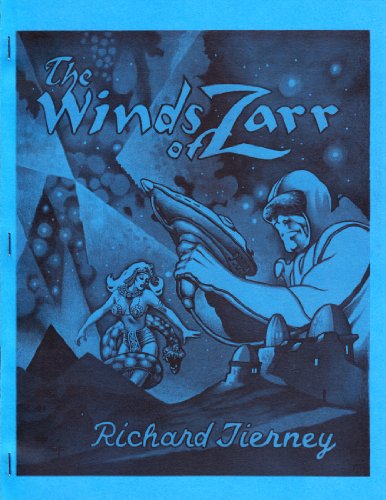 Magus. In about 1960 I wrote my first Simon of Gitta tale, “The Ring of Set”, picturing Simon as Jack. I never intended it as the start of a series. It lay around in manuscript for about 16 years, till my friend, Kirby McCauley, submitted it to Andy Offutt for his first Swords Against Darkness anthology, which appeared in 1977.
Magus. In about 1960 I wrote my first Simon of Gitta tale, “The Ring of Set”, picturing Simon as Jack. I never intended it as the start of a series. It lay around in manuscript for about 16 years, till my friend, Kirby McCauley, submitted it to Andy Offutt for his first Swords Against Darkness anthology, which appeared in 1977.
Authors (Goodman Games): Gary Gygax named H. P. Lovecraft as one of the immediate influences in the Dungeon Masters Guide’s Appendix N. Lovecraft is best known for the creation of the alien god, Cthulhu, from the short story “The Call of Cthulhu” published in Weird Tales in 1928 (and be sure to check out our collection of reprints featuring Lovecraft’s works). Cthulhu is but one of many alien creatures that are perceived as gods by men; some writers that followed in Lovecraft’s footsteps have even tried to organize the gods into a pantheon.
Authors (Frontier Partisans): There’s this thing called The Outlander Effect. It refers to the massive impact the Outlander series of books by Diana 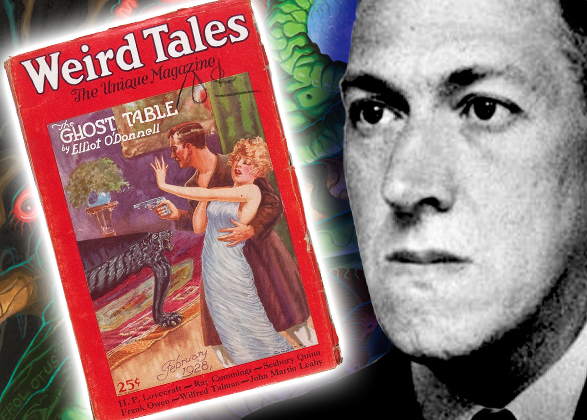 Gabaldon and the STARZ series based on the novels on the economy and culture of Scotland. Over the past quarter century, the books and show — largely set in the Highlands at the time of the Jacobite Rising of 1745, then moving to the North Carolina backcountry in the run-up to the American Revolution — have created a measurable increase in tourism in the Scottish Highlands.
Gabaldon and the STARZ series based on the novels on the economy and culture of Scotland. Over the past quarter century, the books and show — largely set in the Highlands at the time of the Jacobite Rising of 1745, then moving to the North Carolina backcountry in the run-up to the American Revolution — have created a measurable increase in tourism in the Scottish Highlands.
Fiction (DMR Books): The seventh and final installment in the serialized version of Tros of Samothrace is titled “Messenger of Destiny” and consists of what would become chapters 82 – 96 of the novel published in 1934. Set in the summer of the year 54 B.C., this story tells of the aftermath of Julius Caesar’s invasions of Britain and was first published in three parts in the February 10th, 20th and 28th 1926 issues of Adventure magazine.
Book Lists (Hi Lo Brow): Seventy years ago, the following 10 adventures — selected from my Best Forties (1944–1953) Adventure list — were first 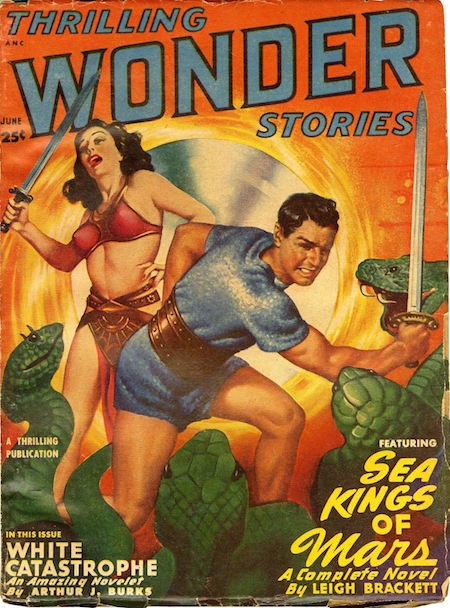 serialized or published in book form. They’re my favorite adventures published that year.
serialized or published in book form. They’re my favorite adventures published that year.
Writing (Monsters and Manuals): A lot of the violence in Tolkien’s work happens “off camera”, so to speak, or is described in very broad brush strokes. Even when we get a “live” account, as in the scene above, it tends to be a sketch or a few edited highlights – the only blow-by-blow fight we really get in The Lord of the Rings, at least as far as I can recall off the top of my head, is the scene just after this one when Frodo gets stabbed by the orc captain’s spear.
Ian Fleming (M Porcius): In Casino Royale and here in Live and Let Die, Fleming does not limit himself to presenting only Bond’s point of view or to 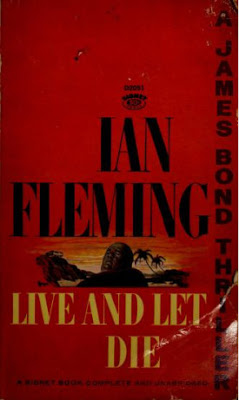 only writing scenes in which Bond himself appears. In Casino Royale there were a few scenes with M and S (head of the division of the British Secret Service devoted to the USSR) and Moneypenny in which Bond was absent, and a scene inside Le Chiffre’s automobile while Bond was pursuing him in his Bentley.
only writing scenes in which Bond himself appears. In Casino Royale there were a few scenes with M and S (head of the division of the British Secret Service devoted to the USSR) and Moneypenny in which Bond was absent, and a scene inside Le Chiffre’s automobile while Bond was pursuing him in his Bentley.
Gaming (Sacnoth’s Scriptorium): So, I’ve been wanting to brush up my 1st edition AD&D knowledge, which I find has gotten overlaid with bits and pieces from other iterations of the game during all those years I spent working on 2nd edition (over forty modules, books, and boxed sets) and editing 3rd edition (about another twenty works, including co-editing two of its three core rulebooks).
Fiction (Hillbilly Highway): Devil’s Call is one hell of a story, a bloody weird western propelled by protagonist Li Lian’s remarkable voice.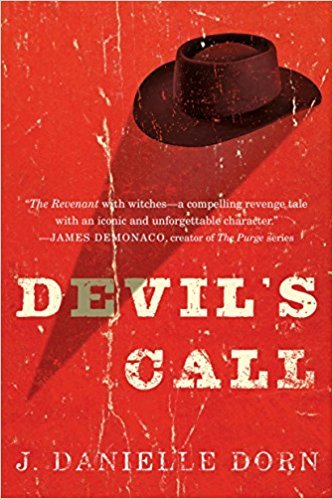
Li Lian is the mixed race daughter from a family where witchery runs on the female line. She follows her husband, a former army doctor, to the Nebraska frontier. It is there that something goes terribly wrong.
Fiction (Tip the Wink): The Liaden universe is the setting for an ongoing series of science fiction novels and stories written by Sharon Lee and Steve Miller. The series covers a considerable time period, some thousands of years in all, although since it also covers more than one universe the exact chronology is…difficult. However the main timeline extends across only a few generations.
Writing (Pulp Archivist): In 1947, Stan Lee, then editor of Timely Comics, which would later be rebranded into Atlas, then Marvel, wrote in Writer’s Digest that “There’s Money in Comics!”, explaining how a writer could adapt to the comics medium. As a result, Lee also explains many concepts of selling writing that are universal to all media before applying them specifically to the visual medium of comics.
Many a pulp writer made the transition.
Fiction (Jon Mollison): Back in the bad old days when I only rarely dipped my toes into NYC publishing waters in search of a rare good read, a brother recommended the First Law books by Joe Abercrombie, and so with the trepidation of a man burned once too often, I grabbed a copy of Red Country from the library and proceeded to get burned once again. As a novel it failed to clear every bar set before it. It failed to deliver adventure. It failed to deliver heroism. Worst of all, it failed to deliver fun.
Doc Savage (Black Gate): Doc Savage was not created so much as he was assembled in much the way Victor Frankenstein stitched together his 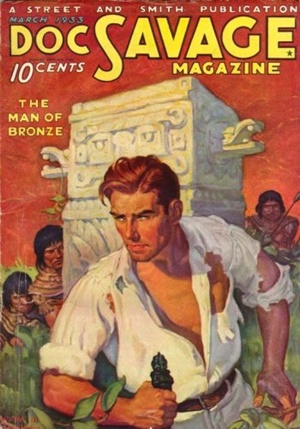 infamous monster from unconnected charnel parts.
infamous monster from unconnected charnel parts.
The year was 1932. At the Street & Smith publishing company, they had a surprise runaway success in a magazine called The Shadow. Inspired by a creepy radio voice used to promote their Detective Story Magazine, the mockingly laughing Shadow captured America’s imagination in that dark Depression year. The magazine kept selling out. S&S pushed author Walter B. Gibson into producing two novels a month so they could release the pulp periodical every other week. The Shadow Magazine kept selling.
Art (Adventures Fantastic): Artist Darrell K. Sweet was born on this date, August 15, in 1934. He passed away in 2011. When I was in junior high and 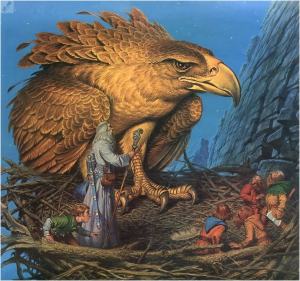 high school, if book had cover he’d done, I always picked it up and gave it a look. I didn’t always buy the book, but based on positive experiences with some of the first books I read that he’d done the cover art for, I always gave it a look. I had the privilege of meeting him a couple of times, and I had the opportunity to tell him that at the 2006 WFC.
high school, if book had cover he’d done, I always picked it up and gave it a look. I didn’t always buy the book, but based on positive experiences with some of the first books I read that he’d done the cover art for, I always gave it a look. I had the privilege of meeting him a couple of times, and I had the opportunity to tell him that at the 2006 WFC.
Firearms (Tom McNulty): As most Clint Eastwood fans know, the famed actor first used the famous snake grip Colt Single Action Army (SAA) revolver in the first season and second episode of Rawhide. The air date was January 16, 1959. The episode was titled “Incident at Alabaster Plain.” Eastwood would use that same gun again in A Fistful of Dollars (1964) and For a Few Dollars More (1966), both directed by Sergio Leone.
Fiction (Pulp Rev): Mention the words ‘Strong Female Character’ and immediately a visage of a tigress fills your head. She is powerful and fearless, 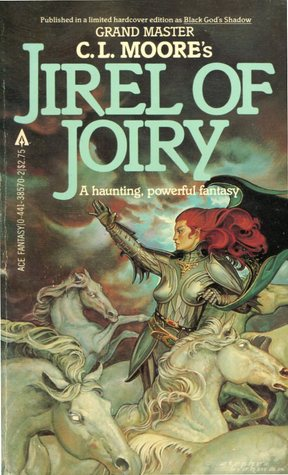 unbeatable in combat, sexually alluring, takes no nonsense from anyone, and can best any man in any masculine pursuit. It’s a trope solidified over decades of repetition on the silver screen and the printed page. And then there is Jirel of Joiry.
unbeatable in combat, sexually alluring, takes no nonsense from anyone, and can best any man in any masculine pursuit. It’s a trope solidified over decades of repetition on the silver screen and the printed page. And then there is Jirel of Joiry.
Good review of LIVE AND LET DIE.
I totally agree with Mollison when it comes to Abercrombie.
Hmmm…I wonder why, if he was recommended the First Law series, Jon Mollison chose to read the final work in the series “Red Country”. While it’s the weakest book Abercromby has written, a lot of its power comes from being the conclusion to storylines set up in previous books. He also seems to have missed that the entire book is a send up of the also subversive, spaghetti Westerns. It’s not surprising he didn’t like it.
Nice to read Jon Mollison’s thoughts on Joe Abercrombie.
I tried to read one of the novels but it was unrelentingly bleak and grim that I couldn’t finish it. There was no point.
-
As with a large chunk of noir novels, Abercrombie’s stuff always leaves me asking, “Why should I give a damn?”. On a technical level, he’s not bad. I simply don’t care whether any of his protagonists live, die, win, lose, whatever.
-
YES. Definitely.
The thing about some Noir, the good Noir anyway, is that they are basically dark morality tales where greedy or lusty or weak people get what they deserve.
I mean, the whole Femme Fatale thing is a lesson in ‘Don’t stick you dick in crazy’. If people are paying attention to the lesson anyway.
But so much of it is dark and nihilistic for the sake of being dark and nihilistic. And why should we care?
And worse, who does? What kind of person enjoys that?
-
Totally agree about “good” noir and what makes it so. “Noir” noir is just sordid, tawdry gutter-crawling. I think some people enjoy it because it sets such a low standard of behavior that they feel better about themselves in comparison.
-